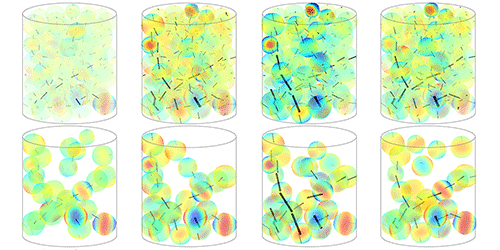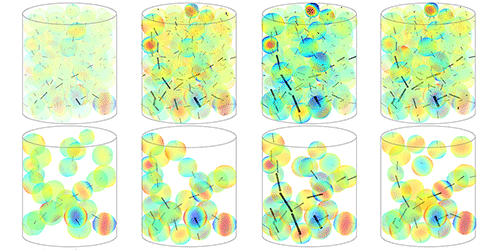Hidden Forces in a Pile of Sand
Processes ranging from earthquakes to the flow of wheat through a silo involve grains that push against one another. The transmission of forces during these events determines, for example, if and how fractures form or whether the grains jam and stop flowing. While a force map can be acquired from particles that lie in a plane or are transparent, doing the same for a 3D pile of opaque sand has, until now, only been possible with computer simulations. Researchers have now developed a technique for directly measuring contact forces in sand piles, providing real data on the distribution of forces within a granular system.
Ryan Hurley, now at the Lawrence Livermore National Laboratory, California, and José Andrade at the California Institute of Technology, Pasadena, and their colleagues examined 77 quartz grains confined in a cylindrical tube. While slowly compressing the grains, the team obtained a map of the contact forces between the particles using a combination of three techniques: x-ray tomography to track the grain-grain contacts, x-ray diffraction to monitor the changing particle positions, and a mathematical analysis to calculate the forces from the x-ray data.
The initial experiments threw up an unexpected finding. As in 2D systems, the compressed sand piles Hurley et al. studied exhibited force chains—strings of connected particles that span the length or width of the pile and carry the bulk of the stress. Force chains are thought to be indicative of stress heterogeneities. Instead, the team found that as the load carried by the chains increased, the distribution of force in the sand pile evened out. While the number of particles involved in this initial demonstration was relatively small, the researchers expect their technique to work for larger systems whose behavior more closely resembles that of real-world granular materials.
This research is published in Physical Review Letters.
–Katherine Wright
Katherine Wright is a Contributing Editor for Physics.





